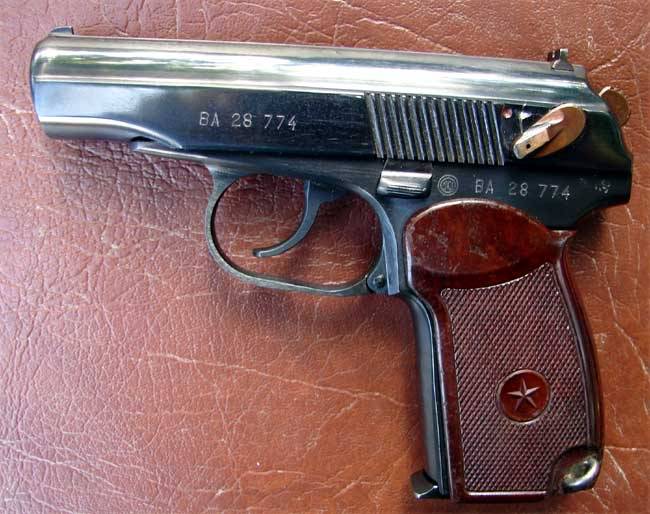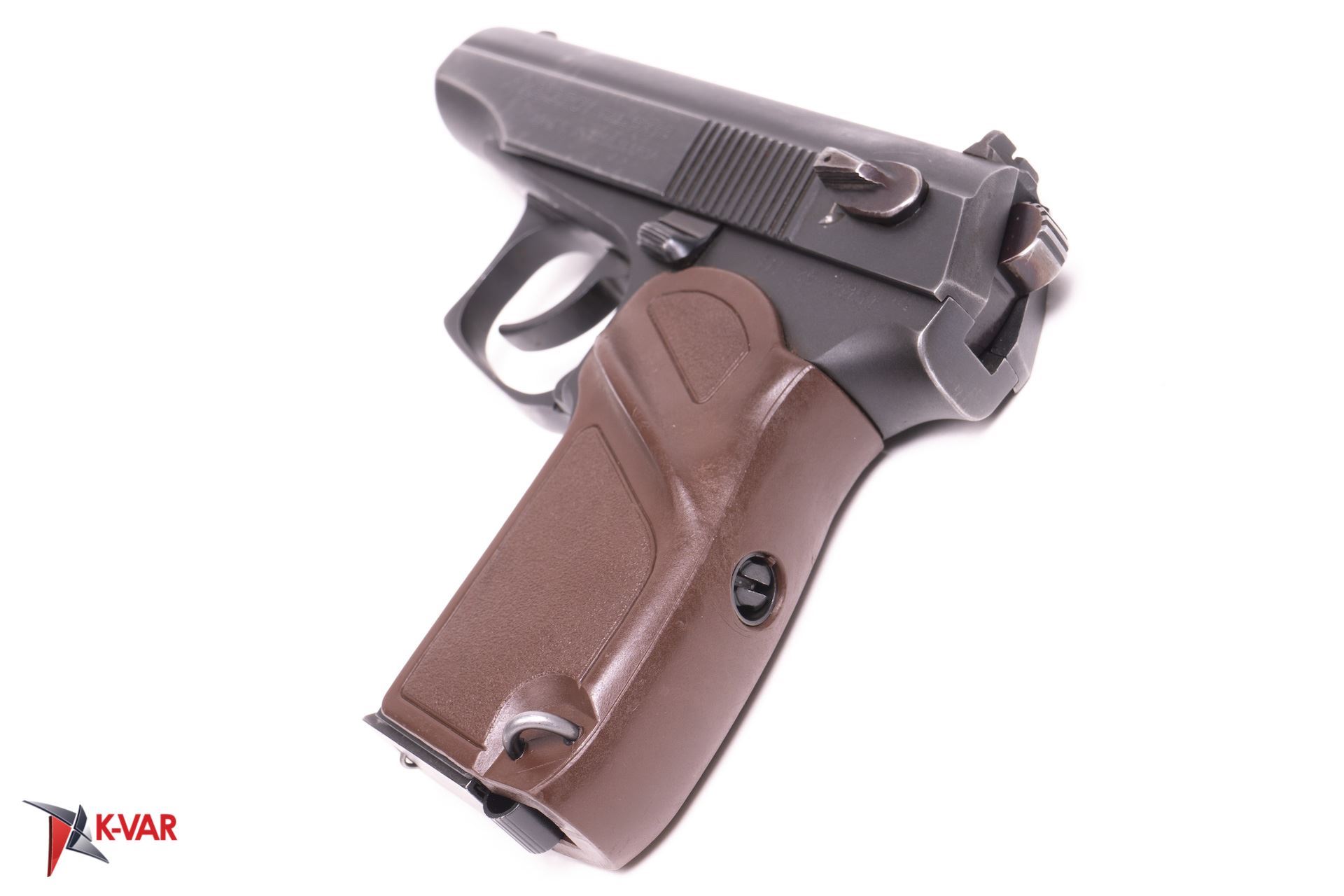

Although the nominal calibre was 9.0mm, the actual bullet was 9.22mm in diameter, being shorter and wider and thus incompatible with pistols chambered for 9×19mm Parabellum cartridges. The Luftwaffe had rejected this pistol design some years before because of its poor accuracy. For simplicity and economy, the Makarov pistol was of straight blowback operation, with the 9×18mm Makarov cartridge being the most powerful cartridge it could safely fire. Rather than building a pistol to an existing cartridge in the Soviet inventory, Nikolai Makarov took up the German wartime Walther "Ultra" design, fundamentally an enlarged Walther PP, utilizing the 9×18mm Makarov cartridge designed by B.V. The Makarov pistol resulted from a design competition for replacing the Tokarev TT-33 semi-automatic pistol and the Nagant M1895 revolver. Under the project leadership of Nikolay Fyodorovich Makarov, it became the Soviet Union's standard military side arm 1951–1991.

The Makarov pistol or PM (Russian: Пистолет Макарова, Pistolet Makarova, literally Makarov's Pistol) is a Russian semi-automatic pistol. Izhevsk Mechanical Plant (USSR/Russia), Ernst Thaelmann (Germany), Arsenal AD (Bulgaria), Norinco (China)Ĩ-round detachable box magazine (10- and 12-round available on the latest Russian models)īlade front, notch rear (drift adjustable)

There is a ton of info over there, but if you take the time to look around & read you'll get a good education in Makarov pistols.For other uses, see Makarov (disambiguation). The only sure way to identify them is by their markings. While the Russian commercial guns are easy to identify by their adjustable sights, all the milsurps (and the Bulgarian commercial guns) look the same. The commercial Russian gun was bought new.Īs others have mentioned, spend some time over at () and do some research. Both of my Bulgarian guns were unissued my Russian milsurp looked as though it had seen very limited use if any at all. My understanding has always been that the East German guns were of the highest quality, but as most all of those examples available are used any one piece might be worse, or better, than another. No disrespect to KJanko, but I don't know that I would agree.Ĭurrently, I have the following: (2) Bulgarian milsurp Makarovs (1) Russian milsurp Makarov (1) Russian commercial MakarovĪll in all, I'd have to say the Bulgarian & Russian military surplus guns are pretty much of equal quality & maybe better than that of my Russian commercial gun. KJanko said:Russian Makarovs are considered the best of all makarovs Other than that, if you don't know which is which, post a pic and ask. The best way to know which Mak is which is to look at the hallmark and stamps. There are also white parade holsters (sometimes asociated with the navy). Black holsters can be found from Bulgaria and East Germany. The East Germans typically used burgandy color. Very thin and poorly polished underneath.Īs to the holsters, the standard Russian and Bulgarian issue was a brown. In general, the finish on the Russian commercial IJ-70s is the lowest quality. However, some of the Norinco Chinese imports were absolutely the worst fit and finish. As to the commercial issues, the best finish is the Miltex Special Edition or the Simson-Suhl, with some of the Chinese being equal.

However, I find the finish on the Russian milsurps to be equal or better. Next, the quality of the East German guns is excellent. However, the Russian commercial IJ-70's always came with bule/black safeties and hammer. Firstly, plum colored safeties are not unique to the Bulgies.


 0 kommentar(er)
0 kommentar(er)
